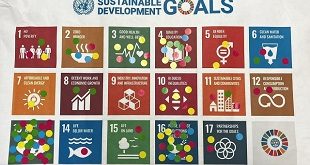
The continent’s labor market participants in sub-Saharan Africa is expected to double from the current 600 million by 2050 and quadruple by 2100
COMMENT | BELINDA ARCHIBONG | As the gender gap in education shrinks all around the world, and especially in Africa, there is a growing question on how to translate these gains for girls and women into meaningful paid employment. Understanding how to leverage this growth in educated women into a skilled workforce is a crucial policy question in a continent where the current number of labor market participants in sub-Saharan Africa – 600 million – will double by 2050 and quadruple by 2100, at which time the region will account for 40% of the world’s labor force.
Africa faces particular challenges as the world’s youngest continent, with 60% of the population below the age of 25 (by U.N. estimates) and some of the highest rates of youth unemployment in the world.
While a major portion of the African population remains employed in agriculture, the share of people employed in agriculture has been declining since the 1990s, with an increasing share of workers employed in industry and the services sector.
Across every industry, the gender gap in employment, reflected in the labor force participation rate and in wages, has remained persistent over time, with women less likely to be employed and earning lower wages than men.
There are multiple reasons for these gender gaps in employment, including frictions related to skills mismatch, information asymmetry (where firms may be lacking information about the skills of applicants and applicants may be lacking full information about the preferences of employers), and lack of access to firm/ employer networks. Women may also face discrimination from employers if firms are less informed about their skills or have biases against hiring women. One way to address the issues with information frictions that may worsen gender gaps in employment is to leverage online hiring platforms that have grown across the continent with increased internet connectivity and access to information and communication technology.
These platforms can reduce search costs for both firms and job applicants by providing a centralized, low-cost means of accessing information about applicants (for firms) and jobs (for applicants).
Evidence from one of the largest hiring platforms in Africa shows that women are underrepresented in these online markets, making up just 33% of applicants on the platform. Service jobs in high paying industries like financial services, consulting, and trade tend to feature heavily on the platform. Women are less likely to apply for jobs and are more likely to underapply or apply for jobs at lower levels relative to their qualifications than men.
On the employer side, women are less likely to be hired than equally qualified men. In ongoing studies, we find that one low-cost way to close these gender gaps in both applications and hiring is to provide information on these patterns to applicants and hiring managers in a way that both (1) makes these issues salient to both parties and (2) signals the willingness of the firms to hire women, by, for example, adding diversity information statements in job ads that encourage applications from women.
On the business side, expanding the reach of these online hiring platforms and their ability to match qualified applicants with jobs may help to reduce gender gaps in employment. In addition to leveraging gains in ICT and online labor markets to reduce gender gaps in employment, policymakers need to pass and enforce stricter regulations against gender discrimination in hiring.
Policies that target more funding towards women-owned businesses and can provide capital for female entrepreneurs could also significantly reduce gender inequality in employment.
Finally, given that women are often tasked with the majority of unpaid care work and home production, policies to provide more opportunities for flexible work, investments in transportation infrastructure to provide more convenient commutes, and policies that provide free or subsidized child care would significantly reduce barriers to women’s participation in African labor markets.
*****

Belinda Archibong is a fellow – Global Economy and Development, Africa Growth Initiative.
 The Independent Uganda: You get the Truth we Pay the Price
The Independent Uganda: You get the Truth we Pay the Price



